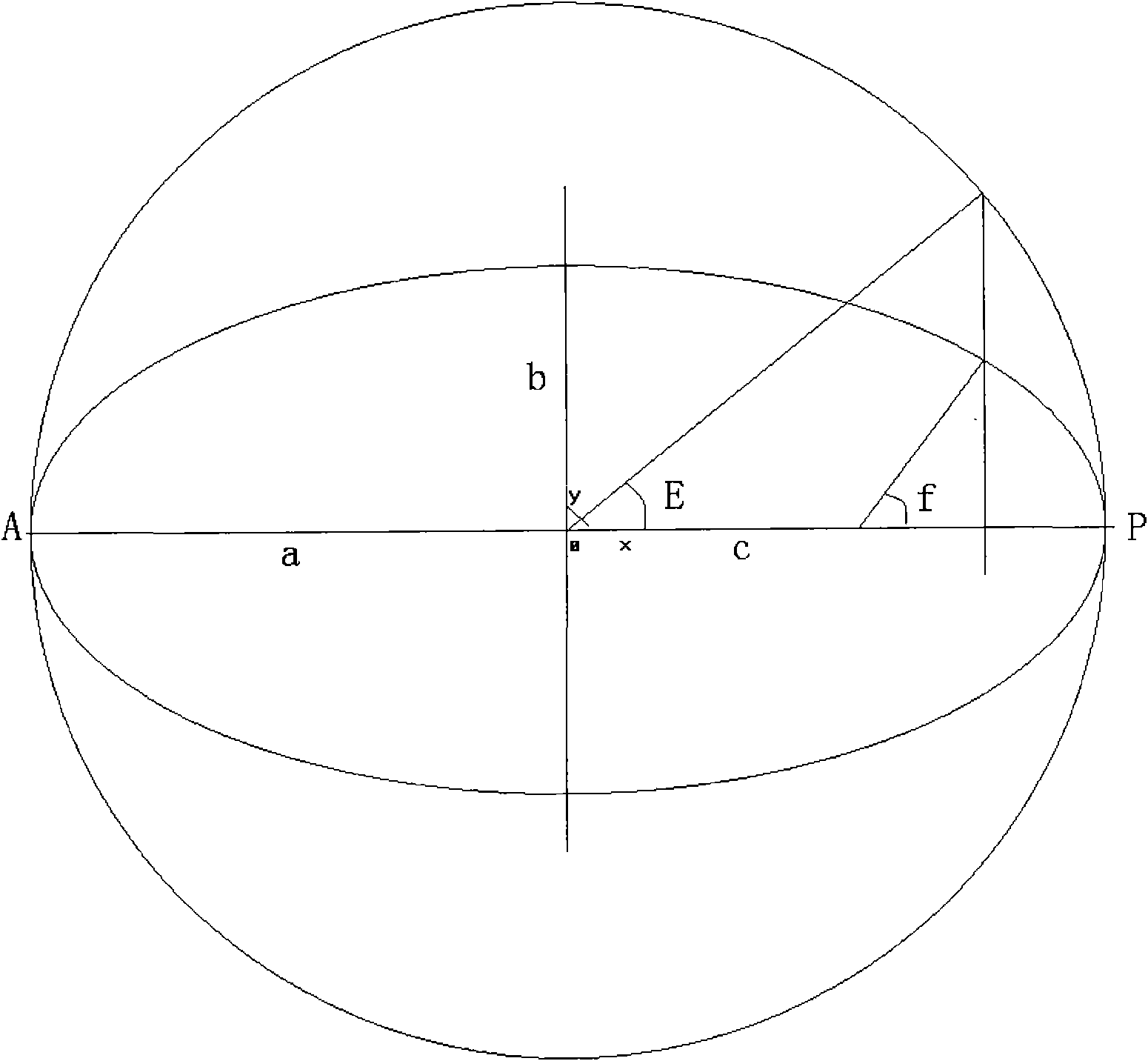Method for determining signal-to-noise ratio of optical remote sensor by combining satellite orbit characteristics
A technology for optical remote sensors and satellite orbits, which is applied in the field of aerospace optical remote sensing, and can solve problems that have not yet been raised
- Summary
- Abstract
- Description
- Claims
- Application Information
AI Technical Summary
Problems solved by technology
Method used
Image
Examples
Embodiment Construction
[0051] Such as figure 1 Shown, the realization process of the present invention is:
[0052] (1) The satellite moves along the conic curve, the focus F of the conic curve is located at the center of the earth, then the orbital equation of the satellite is written as the earth center distance r as:
[0053] r = a ( 1 - e 2 ) 1 + e cos f
[0054] The relationship between satellite anomaly E and true anomaly f is:
[0055] acosE=ae+rcosf
[0056] bsinE=rsinf
[0057] Derived to get:
[0058] cos E = e - cos f 1 + e cos f ...
PUM
 Login to View More
Login to View More Abstract
Description
Claims
Application Information
 Login to View More
Login to View More - R&D
- Intellectual Property
- Life Sciences
- Materials
- Tech Scout
- Unparalleled Data Quality
- Higher Quality Content
- 60% Fewer Hallucinations
Browse by: Latest US Patents, China's latest patents, Technical Efficacy Thesaurus, Application Domain, Technology Topic, Popular Technical Reports.
© 2025 PatSnap. All rights reserved.Legal|Privacy policy|Modern Slavery Act Transparency Statement|Sitemap|About US| Contact US: help@patsnap.com



